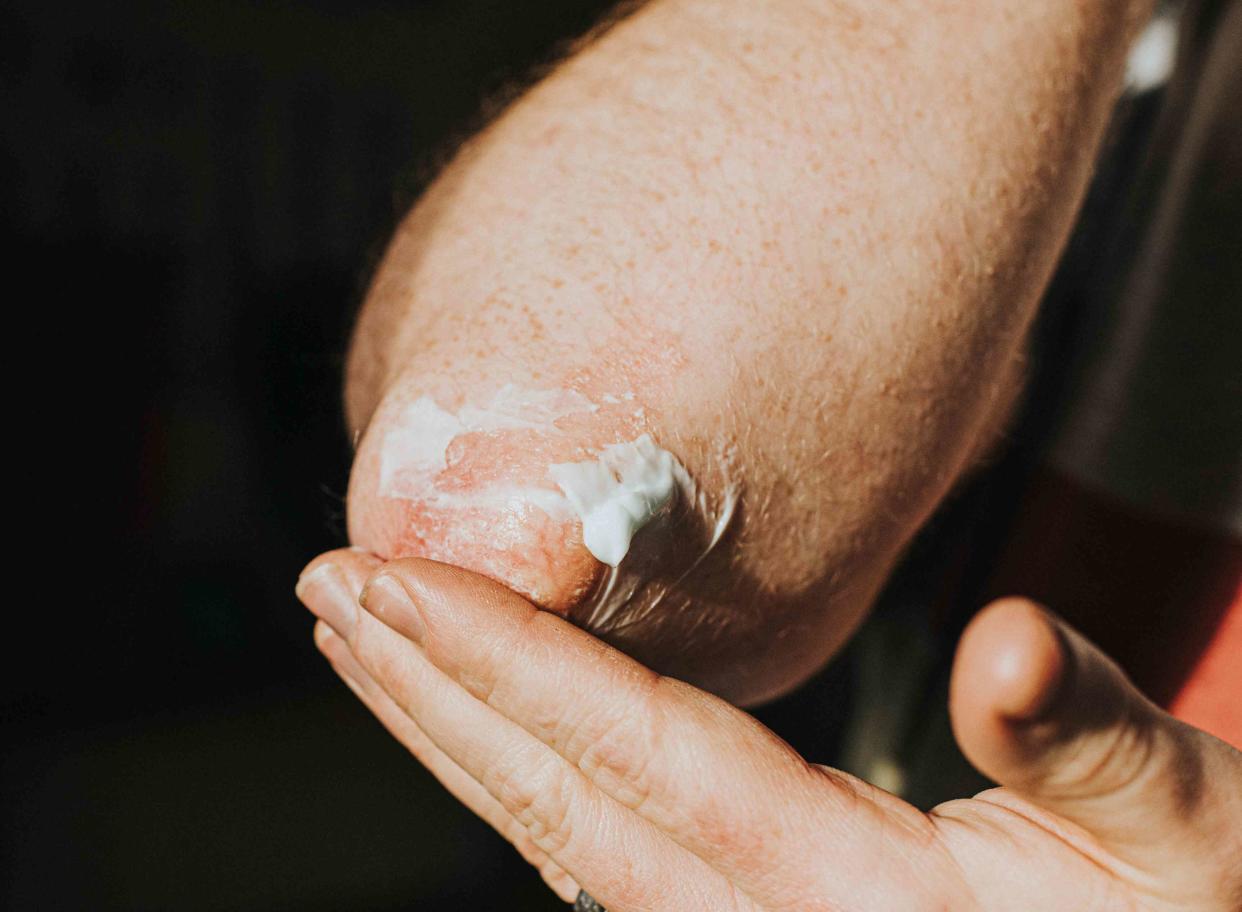Air Pollution Could Increase Psoriasis Risk Significantly, Study Finds

Carol Yepes / Getty Images
Fact checked by Nick BlackmerFact checked by Nick Blackmer
Key Takeaways
Exposure to PM2.5 and PM10 significantly increases the risk of developing psoriasis.
People with a genetic predisposition to psoriasis face more than four times the risk when exposed to high levels of air pollutants.
Experts say those with a strong family history of psoriasis should consider living in areas with low pollution if that's an accessible option.
Air pollutants can significantly increase the risk of psoriasis, according to a recent study published in JAMA Network Open.
The study analyzed data from the U.K. Biobank over a 12-year period, including 474,055 individuals who were psoriasis-free in the beginning. Researchers found that people exposed to air pollutants such as fine particulate matter (PM2.5) and particulate matter (PM10) were at a higher risk of developing psoriasis.
For every interquartile range increase in PM2.5 and PM10, the risk of psoriasis rose by 41% and 47%, respectively.
People with a genetic susceptibility to psoriasis had more than four times the risk of developing the condition when exposed to high levels of PM2.5 and PM10 compared to those with low genetic susceptibility and low exposure. However, the genetic analysis was limited to only White Europeans, who made up 94% of the sample.
“The concept that pollution could trigger psoriasis had been introduced in some other work. What is truly novel here is that the authors found that the risk of psoriasis in those with a susceptible genetic background was specifically increased by pollution,” said Alexa Kimball, MD, MPH, a professor of dermatology at Harvard Medical School.
Kimball said it’s unclear why pollution triggers psoriasis, but it could be direct skin irritation or whole-body inflammation from lung exposure.
Psoriasis is an autoimmune disease that attacks healthy skin tissue. It causes skin cells to reproduce too rapidly, often resulting in thick, red, scaly patches that can be itchy and sometimes painful. Over 7 million U.S. adults live with psoriasis.
Related: Air Quality Is Improving Nationwide, but One Type of Harmful Pollution Remains a Threat
Kimball said people with a strong family history of psoriasis might want to consider living in areas with lower pollution.
According to a 2024 report from the American Lung Association, some of the most polluted areas include locations in California and Oregon, while Maine and Hawaii have the lowest levels of pollutants.
More accessible ways to reduce psoriasis risk include avoiding smoking, excessive alcohol consumption, as well as skin injuries from tattoos and piercings, said Angela Moore, MD, an associate professor at Texas Christian University Burnett School of Medicine who has been a principal investigator on a wide range of clinical trials related to psoriasis treatment.
Medications like beta-blockers and lithium are also linked to a higher risk of psoriasis.
While the study was based in the United Kingdom, Moore said it’s applicable to U.S. psoriasis cases and the state of air pollution domestically.
In a commentary, physicians said data to support clinical recommendations are lacking despite accumulating evidence on the interactions between air pollutants and inflammatory skin disease.
“It is unclear whether topical moisturizers and treatments are likely to protect high-risk individuals or whether they may increase the penetration of air pollutants,” they wrote. “While it may seem intuitive to counsel patients to use protective clothing, there are little data to support the efficacy of such a recommendation.”
Read Next: Exposure to Air Pollution Could Trigger Heart Attack Within an Hour, Study Finds
What This Means For You
Air pollution is strongly linked to a higher risk of psoriasis, especially if you're genetically predisposed to the condition.
Read the original article on Verywell Health.

